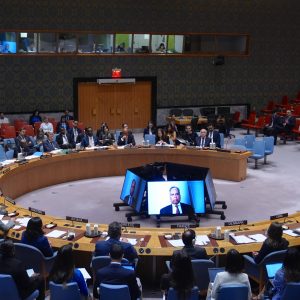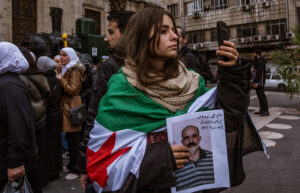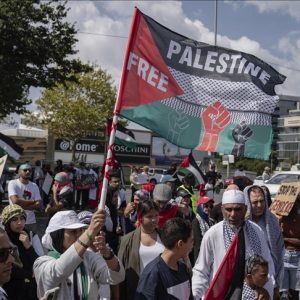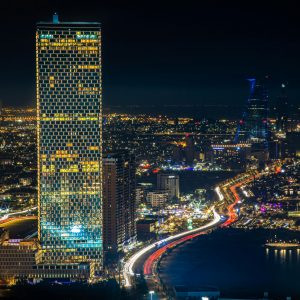For displaced Palestinians in Gaza, fear and suffering on the road south
Khan Yunis, Palestinian Territories — AFP
Fadwa al-Najjar said she walked for 10 hours with her family from the north of war-torn Gaza to reach a UN camp for displaced Palestinians, witnessing terrifying scenes along the road.
“We left the house at 10:00 am and we got here at 8:00 pm,” said the 38-year-old who walked 30 kilometres with her seven children after Israel told more than a million Palestinians to move south ahead of an expected ground offensive.
Israel has been pounding Gaza since October 7, as a result of which more than 4,100 Palestinians, mainly civilians, have been killed, according to Gaza’s health ministry.
Najjar said she left the north with nearly 90 members of her extended family who were forced to walk because they couldn’t pay the 1,000-shekel fare ($250) demanded by a bus driver.
“We tried to rest along the way but the bombardments were intense so we started to run,” she said, describing how at one point, several cars on the road in front of them were hit by a strike.
“We saw bodies and limbs torn off and we just started praying, thinking we were going to die,” she said, standing outside one of dozens of tents at the emergency camp.
Israel has denied targeting civilians who were fleeing to the south and has accused Hamas of using the population as “human shields” — a charge denied by the Palestinian resistance movement.
– ‘Wish we’d stayed at home’ –
“The bombings were happening overhead all the way. I would have preferred not to leave, to have stayed at home and died there,” said Malak, one of Najjar’s daughters.
The tents, which can hold hundreds of people, were set up by the UN agency for Palestinian refugees (UNRWA) on the western edge of Khan Yunis.
Opposite, street vendors have set up stalls selling tinned goods, cooking pots and drinks.
Earlier this week, the UN said “over one million people, almost half the total population of Gaza, have been displaced” with some 600,000 in the central and southern part of the enclave, which is home to 2.4 million people.
Israel cut off supplies of water, electricity, fuel and food to the long-blockaded territory, with UNRWA warning of chronic shortages.
– On foot, by cart or truck –
Inside one of the tents is Umm Bahaa Abu Jarad, 37, who used to live in the northern town of Beit Lahiya in a building with “about 150 people who are now scattered between Rafah and Khan Yunis”.
“We took a donkey cart to reach Gaza City,” she said.
Before being given a tent, she and 27 others spent five days sleeping outside in the courtyard of a UNRWA building.
“It was really hot during the day and very cold at night,” she recalled. And even now, they have “no blankets nor mattresses”.
Her son now has a cough and she is itching and has rashes because of the lack of sanitation.
“We line up for the bathroom with dozens of other people and you can wait for more than an hour before it’s your turn,” she said.
Her cousin Faten Abu Jarad, a mother of seven, also witnessed Israeli strikes while walking through Gaza City.
“We started to run, and we ran a long way until we found a truck carrying cattle,” said Abu Jarad who is in her 40s.
“We were all piled in together, young and old, on the cow dung,” she said.
“We got here in a pitiful state.”










